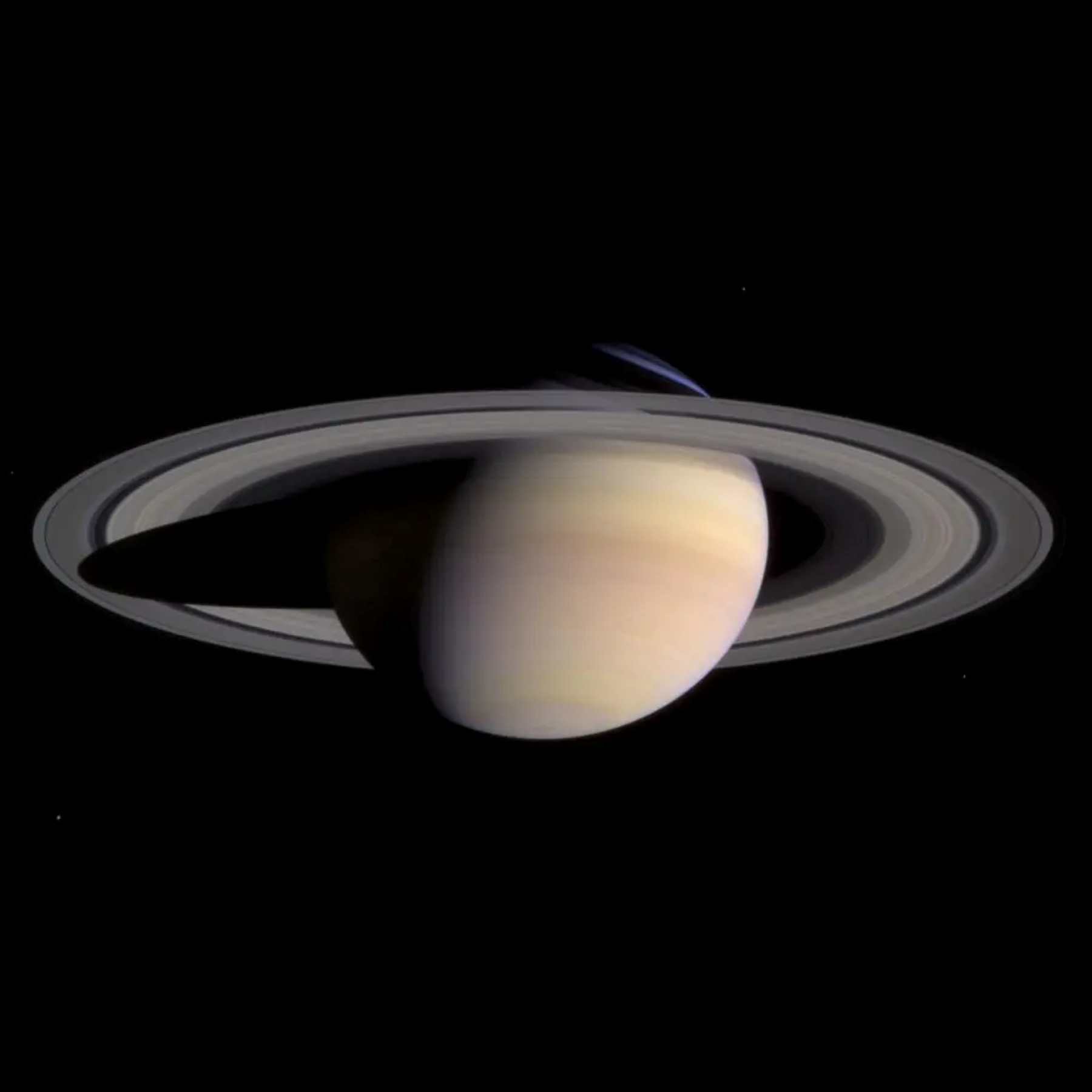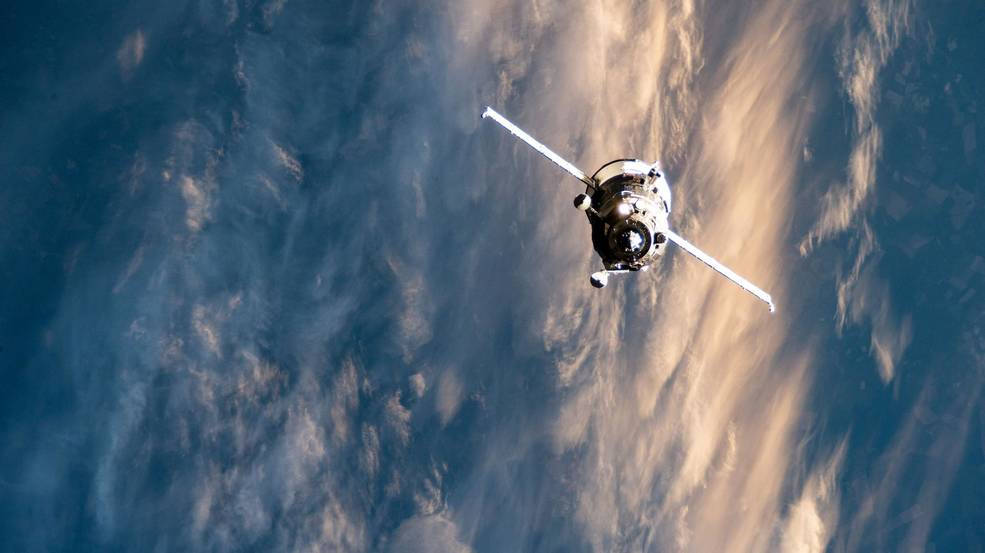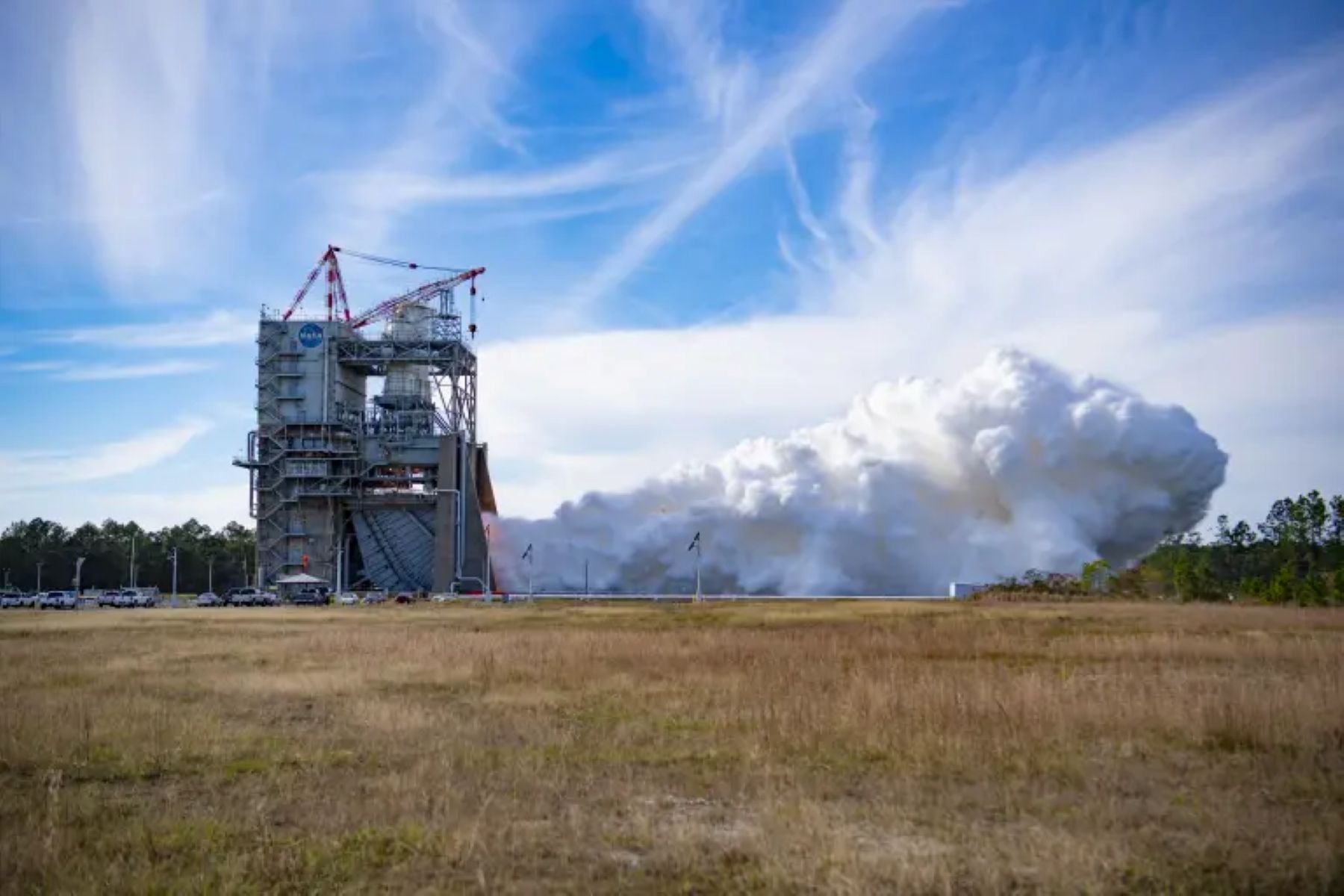Cassini Sees Saturn

The Cassini-Huygens spacecraft captured this last “eyeful” of Saturn and its rings on March 27, 2004, as it continued its way to orbit insertion. This natural color image shows the color variations between atmospheric bands and features in the southern hemisphere of Saturn, subtle color differences across the planet’s middle B ring, as well as a bright blue sliver of light in the northern hemisphere – sunlight passing through the Cassini Division in Saturn’s rings and being scattered by the cloud-free upper atmosphere.
Cassini-Huygens, at 12,593 pounds one of the heaviest planetary probes ever, was launched on Oct. 15, 1997, on a Titan IVB/Centaur rocket from Cape Canaveral Air Force Station in Florida. Although that was the most powerful expendable launch vehicle available, it wasn’t powerful enough to send the massive Cassini-Huygens on a direct path to Saturn. Instead, the spacecraft relied on several gravity assist maneuvers to achieve the required velocity to reach the ringed planet. This seven-year journey took it past Venus twice, the Earth once, and Jupiter once, gaining more velocity with each flyby for the final trip to Saturn.
On July 1, 2004, with the Huygens lander still attached, Cassini fired its main engine for 96 minutes and entered an elliptical orbit around Saturn, becoming the first spacecraft to do so. Thus began an incredible 13-year in-depth exploration of the planet, its rings and its satellites, with scores of remarkable discoveries.
The Cassini mission ended on Saturn in 2015, when operators deliberately plunged the spacecraft into the planet to ensure Saturn’s moons remain pristine for future exploration.
Image Credit: NASA/JPL/Space Science Institute





